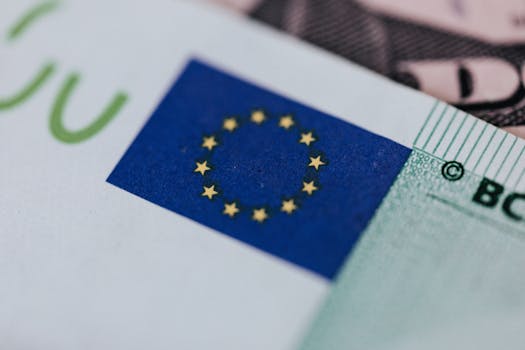Companies with the best and the worst fundamentals.
Lists of companies in NSE500 with the best and the worst fundamentals...
Lists of companies in NSE500 with the best and the worst fundamentals...
List of the latest important filings for NSE500....
Lists of companies in NSE500 with the best and the worst technicals...

An analysis of the potential impacts of the Trump-Putin summit in Alaska...

The Alaska Summit on August 15, 2025, is anticipated to significantly influence...

The article analyzes the potential impacts of the upcoming Trump–Putin summit on...

In the face of global economic shifts and geopolitical strains, the world eagerly anticipates the upcoming talks between U.S. former President Donald Trump and Russian President Vladimir Putin scheduled for August 15, 2025, in Alaska. These discussions could have profound implications not only for bilateral relations but also for foreign exchange (FX) markets, potentially reshaping volatility and exchange rates across the globe.
The backdrop of these talks is as tumultuous as it is significant. Historically, U.S.–Russia relations have oscillated between cooperation and confrontation. In the wake of recent geopolitical events, including the ongoing tensions in Eastern Europe and the Middle East, the stakes for this meeting could not be higher. Analysts are closely watching to see if this dialogue can pave the way for a new level of cooperation that might stabilize global markets.
The economic implications of the Trump-Putin summit are multifaceted. On one hand, a successful negotiation could provide momentum for a series of bilateral trade agreements, boosting economic activity in both nations. Conversely, failure to reach a consensus could lead to heightened sanctions or trade restrictions that would negatively affect both countries' currencies.
As of now, the U.S. dollar, which is considered a global reserve currency, has been exhibiting signs of strength, fluctuating around 95 on the DXY index. The Russian ruble, on the other hand, has shown volatility due to sanctions and global oil prices. Currently trading at approximately 75 rubles per dollar, its stability hinges on the ongoing negotiations between the two powers, particularly in energy markets.
Market analysts are predicting increased FX volatility surrounding the meeting date as traders speculate on potential outcomes. The currency market has seen a sharp uptick in options volume, indicating that investors are bracing for significant moves in the dollar-ruble exchange rate. The implied volatility for one-month dollar-ruble options has reached 14%, compared to an average of 8% in previous months, emphasizing the market’s anxiety over how the talks may unfold.
One notable factor is the role of energy markets, particularly oil prices, which are influenced considerably by U.S.-Russia relations given that both countries are major oil producers. Brent crude, a benchmark for global oil prices, recently hovered around $80 per barrel. Any progress made in the Alaska talks regarding energy cooperation could lead to price stabilization, impacting both currencies positively. Alternatively, escalated tensions could spike oil prices, intensifying inflationary pressures worldwide and adversely affecting both the ruble and dollar.
Geopolitical risks are intertwined with FX market movements, and currency traders must remain vigilant as the Alaska talks approach. A successful outcome could diminish the geopolitical risk premium embedded in the ruble, leading to a stronger currency. Analysts at Goldman Sachs have posited that if a new cooperation framework is established between Washington and Moscow, the ruble could appreciate by up to 5% against the dollar in the short term.
Conversely, if the talks falter, we may see the reverse, with a potential reassessment of the ruble that could lead to further depreciation. Currency managers are adjusting strategies in anticipation of various contingencies, with some opting for hedging strategies that include long positions in uncertainty-driven assets, while others are exploring emergent markets.
The outcomes of the Trump-Putin meeting in Alaska could have ripple effects beyond just the U.S. and Russia. For instance, a thawing relationship might provide optimism in European currencies, especially those in Eastern Europe that are within Russia's sphere of influence, such as the Hungarian forint or Polish zloty. Strengthened ties could lessen the economic isolation of Russia, impacting trade relations across the continent.
During a period marked by uncertainty due to high inflation rates and tightening monetary policy across many countries, any shift in dynamics through enhanced U.S.-Russia relations could foster a more stable environment conducive to international trade and investment. The Federal Reserve and Bank of Russia will likely adjust their monetary policies based on the outcomes, influencing interest rate expectations that will feed back into FX valuations.
Market sentiment leading up to the meeting has been cautiously optimistic, though tempered by widespread uncertainty. Recent bullish trends in both countries' stock markets reflect investor hope for a resolution, with the S&P 500 index maintaining levels above 4,500 and the MOEX, Moscow's stock exchange index, rebounding by approximately 12% over the past two months.
Furthermore, social media sentiment analysis shows that discussions around the Alaska summit are drawing significant attention, with a 75% positive sentiment ratio among retail investors. However, caution remains, as many stakeholders are keenly aware that the political landscape can shift rapidly.
As the world turns its eyes to Alaska, the Trump-Putin talks are set to be a pivotal moment in shaping global FX volatility and exchange rates. With the stakes so high, banks, hedge funds, and individual investors are aligning their strategies to manage potential outcomes. Regardless of the results, the financial implications will undoubtedly be felt far beyond the shores of North America and Eurasia, impacting global markets as a whole.

The article discusses how AI technologies are leveraging digital footprints to provide...

An analysis of why European banks continue to report strong profits despite...